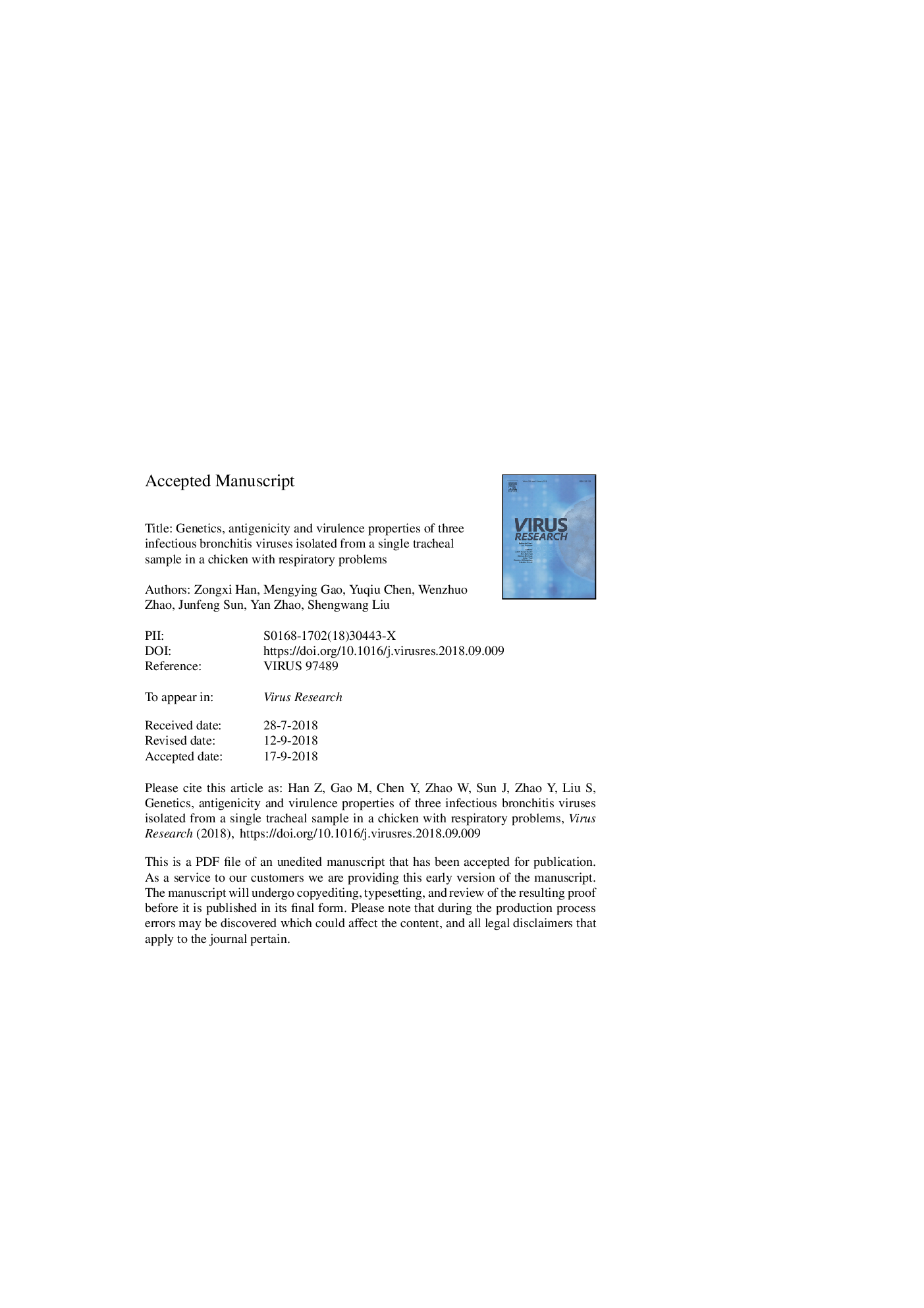| Article ID | Journal | Published Year | Pages | File Type |
|---|---|---|---|---|
| 11029041 | Virus Research | 2018 | 44 Pages |
Abstract
Three different IBV genotypes/serotypes, designated ck/CH/LDL/150434-I (LDL/150434-I), ck/CH/LDL/150434-II (LDL/150434-II) and ck/CH/LDL/150434-III (LDL/150434-III), were detected in a single tracheal sample from a chicken showing signs of respiratory disease. The viruses were isolated using a cross-neutralization test and limiting dilution in embryonated specific-pathogen-free (SPF) eggs. Isolate LDL/150434-I was a re-isolation of H120 vaccine strain that was introduced into the chicken flock by vaccination, transmitted between chickens, and later accumulated several genomic mutations. Isolate LDL/150434-II was a novel variant that originated from recombination events between H120 and ck/CH/LDT3/03-like viruses. The widespread use of H120 vaccine, which offered incomplete protection against heterotypic IBVs in the fields, may play important roles in the emergence of such a novel genetic variant. Based on the analysis of S1 and complete genomic sequence, isolate LDL/150434-III was related genetically but distinct from the established strains of nrTW I type viruses of GI-7 lineage circulating in Mainland China since 2009. The three IBV isolates were avirulent when they infected SPF chickens. Furthermore, synergistic effects on pathogenicity were not observed when the different types co-infected the SPF chickens. However, the isolates persisted in the respiratory tracts longer in combined infected birds than those in individual infected birds. The results provide insights into the evolution of the viruses and co-infection of chickens with different virus serotypes.
Related Topics
Life Sciences
Immunology and Microbiology
Virology
Authors
Zongxi Han, Mengying Gao, Yuqiu Chen, Wenzhuo Zhao, Junfeng Sun, Yan Zhao, Shengwang Liu,
